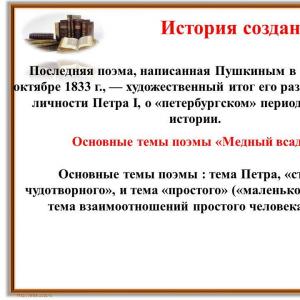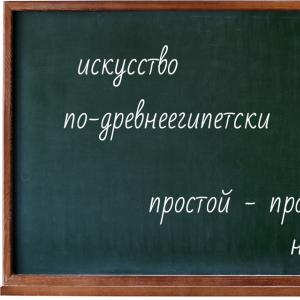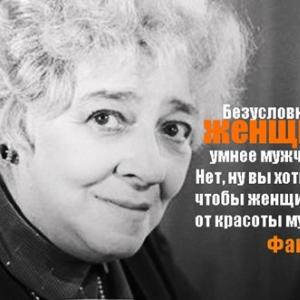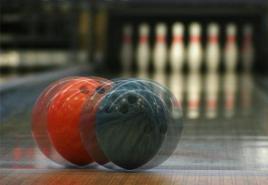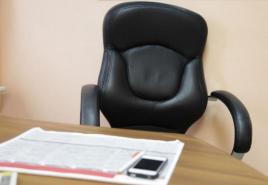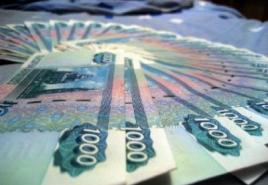What is the Kremlin for children. Sights of the Moscow Kremlin: description, history and interesting facts. The history of the creation and formation of the Moscow Kremlin
E. L. Emelyanova
Tell children about the Moscow Kremlin
KREMLIN TOWERS
Dolgoruky built his fortress,
To the city was the first in the district.
Kalita erected the oak Kremlin
For centuries, so that he stood like new ...
What is the Moscow Kremlin? This is both a simple and complex question. On the one hand, it is an old majestic fortress with beautiful buildings from different eras. But something is missing in this definition. Unlike anything else in the world, having several purposes at once, the amazing and mysterious "island" has always amazed and inspired. He is not a petrified past, he is an animated hero. This is the heart of not only Moscow, but the whole of Russia.
The walls and towers of the Kremlin were erected under Ivan III in 1485-1495 by architects Antonio Fryazin (Antonio Gilardi), Marco Fryazin (Marco Ruffo), Pyotr Fryazin (Pietro Antonio Solari), Aleviz Fryazin the Old (Aloisio de Carcano). The architects were not related. "Fryazins" in medieval Russia called all Italians.
The Kremlin walls, over two kilometers long, follow the outlines of Borovitsky Hill and cover an area of more than 27 hectares. The height of the walls is from 8 to 19 meters, the thickness is from 3.5 to 6.5 meters. On the top of the wall there is a combat platform, invisible from the outside, with a width of 2 to 4.5 meters.
In the corridors inside some towers, “chambers” have been preserved - deaf dungeons without light, where dangerous criminals were kept.
There are 20 towers on the walls. They were usually named after the temples standing near them or the features of the area.
The oldest tower is Taynitskaya. The wall was built here to protect from the Tatars on the south side. A well was dug under the tower and a secret passage was made to the Moscow River in order to supply the Kremlin with water in case of a siege. Hence the name of the tower.
An elegant turret of an intricate shape - Tsarskaya. She is the youngest. It was built by order of Ivan the Terrible, from which he could observe the construction of the Pokrovsky Cathedral and the massacre of the convicts. From here, the Moscow queens and princesses, who were not allowed to appear among the crowd, watched the procession along Red Square on major holidays.
Hats who the proud will not take off
At the gates of the saints in the Kremlin.
The most important and most famous tower is Spasskaya. In Russia, it was customary to take off your hat at the entrance to the Kremlin and put candles in front of the icons. They entered the Kremlin through the Spassky Gate, which was located in the Spassky Tower. This was the main front gate. On the tower was the image of the Savior Not Made by Hands. There is also the famous big clock - Spassky chimes.
CATHEDRAL OF THE ARCHANGEL
On the crest of Borovitsky Hill in the southeastern part of Cathedral Square is the Archangel Cathedral. For the first time, the wooden Mikhailo-Arkhangelsk Church was built on this site in the middle of the 13th century under Prince Mikhail Yaroslavich the Brave, brother of St. Alexander Nevsky. According to legend, it was the second church in Moscow. And in 1333, by decree of Ivan Kalita, a stone church was erected here in honor of Archangel Michael, the patron saint of warriors and princes in their military exploits. In large cities of Russia, they tried to build a temple in his honor. Ivan Kalita built a new cathedral according to a vow, in gratitude for the deliverance of Russia from hunger.
According to Christian ideas, the Archangel Michael guards the gates of heaven, so the temple also began to serve as a tomb for Russian sovereigns and princes. The first to be buried in the Kremlin tomb was Ivan Kalita. The great princes and kings are buried in the temple, their images are depicted in the paintings on the walls and pillars. Now there are 53 burials and 46 tombstones in the Archangel Cathedral.
Among the royal burials, the graves of Dmitry Donskoy, Ivan the Terrible and his two sons, Tsarevich Ivan and Tsar Fedor Ivanovich, who ended the legendary family of Rurikovich, who ruled Russia for seven and a half centuries, attract the most attention. The most revered shrines are the relics of Tsarevich Dmitry (the youngest son of Ivan the Terrible), whose remains were once brought here from Uglich! The death of a child once shocked the people and left a mark in historical songs, legends, and paintings. Another shrine is the shrine of the Chernihiv wonderworkers. Prince Mikhail of Chernigov, together with the boyar Fedor, were killed in the Horde in 1246 for refusing to bow to idols. Their relics, as one of the most ancient Russian relics, were transferred from Chernigov to Moscow.
The temple acquired its present appearance at the beginning of the 16th century. The Italian master Aleviz Novy, also known as Aleviz Fryazin, worked on its construction.
It was quite difficult for Aleviz to adapt the Renaissance style motifs familiar to him to a completely unfamiliar form of the building. The Archangel Cathedral was built according to Russian traditions, but elements of Venetian architecture were used in the processing of facades. The result was a rather peculiar structure, which even contemporaries assessed ambiguously and called "Russian in Italian clothes."
The five-domed, six-pillar Cathedral of the Archangel has become one of the most elegant buildings in the Moscow Kremlin. This is the second largest Kremlin cathedral.
BLAGOVESHCHENSKY CATHEDRAL
The Annunciation Cathedral is one of the most famous Kremlin churches. For a long time the cathedral was the house temple of Russian sovereigns. Here the kings came to take communion and confession, here they baptized their children. The temple was consecrated in honor of the Annunciation of the Blessed Virgin Mary. The cathedral enjoyed special reverence among parishioners, because there were many sacred relics here.
According to legend, in 1290, a wooden church was laid at the princely court of Prince Daniel Alexandrovich. Then, over the centuries, the temple was repeatedly rebuilt and became stone. In 1560, the cathedral acquired its present appearance - a nine-domed temple with gilded domes. On three sides of the cathedral there is a covered gallery or porch. Here, according to custom, the sovereigns went up, leaving the Assumption Cathedral after the wedding to the kingdom. Here, on ordinary days, most of the beggars gathered, and only Peter I forbade them to enter the Kremlin.
Each Russian sovereign sought to make some contribution to the arrangement and decoration of the temple. prince Vasily III issued a decree according to which the painting of the walls of the Annunciation Cathedral had to be updated, and the domes of its domes were richly and festively gilded. At that time, the cathedral was still called "the temple in the Tsar's court near Senya", but because of the abundance of gold on numerous cupolas, it was also called the Golden-Domed Cathedral.
The cathedral was connected with the sovereign's chambers, and from the east it was adjoined by a garden where fruit trees and there were neat ponds with fish. The southern entrance to the cathedral was used only by the sovereign and his family. The floor of the temple was lined with precious stones - marble, jasper, agate.
The value of the interior decoration of the temple lies in the miraculous power. For example, in the northern gallery, an image is stored All-Merciful Savior, who became famous for healing during the plague of 1771. The iconostasis of the cathedral contains icons painted by such outstanding masters as Andrei Rublev, Theophan the Greek and Prokhor from Gorodets.
End of introductory segment.
Text provided by LitRes LLC.
You can safely pay for the book with a Visa, MasterCard, Maestro bank card, from an account mobile phone, from a payment terminal, in the MTS or Svyaznoy salon, via PayPal, WebMoney, Yandex.Money, QIWI Wallet, bonus cards or in another way convenient for you.
The Moscow Kremlin is located. The history of our Motherland is reflected in each of its buildings. These are ancient cannons and bells, cathedrals and palaces, museums and the residence of the President of Russia. High walls and loopholes tell us that this powerful and majestic building is a fortress. At the same time, this building also reflects the spiritual life of Russia. The Kremlin in Moscow is an all-Russian national shrine, a symbol of Russia.
The ensemble of the Kremlin in Moscow includes the fortress itself with its powerful walls and towers, as well as temples and chambers, majestic palaces and grand administrative buildings. These are ensembles of squares - Cathedral and Ivanovskaya, Senate and Palace, Trinity, as well as streets - Spasskaya, Borovitskaya and Palace.
Moscow Kremlin towers
The walls of the Moscow Kremlin have 20 towers, among which there are no identical ones. The history of Moscow began at the Borovitsky Gates. Here is one of the southwestern towers of the Kremlin wall - Borovitskaya. It goes to the Alexander Garden and Borovitskaya Square. According to legend, her name comes from the forest that covered one of the seven hills on which Moscow stands.
Cathedrals of the Moscow Kremlin
The architectural ensemble of the Moscow Kremlin includes eight cathedrals. One of the main temples of the Russian state - Uspensky. It hosted the coronation of emperors, the wedding to the kingdom, the election of the heads of the Russian Orthodox Church and the burial of metropolitans and patriarchs. Now here you can see the prayer place of Ivan the Terrible, especially valuable icons, a necropolis and a majestic iconostasis.
Blagoveshchensky cathedral served as the personal temple of the Grand Dukes and Tsars of Moscow. It is believed that some of the icons of the temple were created by Andrei Rublev, as well as Theophan the Greek.
Cathedral of the Archangel was the ancestral tomb of the great princes and kings. It has 47 tombstones and 2 shrines. Grand Dukes Ivan Kalita and Dmitry Donskoy, Ivan III and Ivan the Terrible, Tsarevich Dmitry and Tsars Mikhail and Alexei Romanovs are buried here. The image of "Archangel Michael with deeds" created during the Battle of Kulikovo can be seen in the iconostasis of the temple.
The house church of Russian metropolitans and patriarchs is a small Church of the Deposition of the Robe. In it, in a single ensemble, a four-tiered iconostasis in a silver frame and wall paintings are presented.
To the north of the Assumption Church and the bell tower of Ivan the Great are Patriarchal Chambers and small five-domed temple of the Twelve Apostles, built by Russian masters Antip Konstantinov and Bazhen Ogurtsov.
ten-headed St. Basil's Cathedral been in danger of demolition many times. Napoleon in 1812 dreamed of taking him to Paris, and later wanted to blow him up. In Soviet times, the cathedral interfered with the passage of demonstrations and they also wanted to destroy it.
To the east of the Terem Palace are four house churches: St. Catherine and Verkhospassky Cathedral, the Church of the Crucifixion of Christ and the Church of the Resurrection of the Word.
Moscow Kremlin - history and architecture
The first mention of Moscow is found in the annals and refers to 1147. In 1156, the first wooden walls were built on the banks of the Moskva River and the mouth of the Neglinnaya River. Russia at that time was divided into separate principalities, therefore, in 1238, it could not resist the invasion of the Tatar-Mongol yoke. Moscow was devastated and the Kremlin burned.
During the reign of Ivan Kalita, the Moscow principality was strengthened and the Kremlin was rebuilt. Stone churches, cathedrals and strong oak walls were built. By decree of Prince Dmitry Donskoy, the grandson of Ivan Kalita, in 1367 white-stone walls and towers were erected. Moscow began to be called white-stone. Under Grand Duke Ivan III, the territory of the Kremlin expanded, a moat was dug around the walls. Together with foreign architects, the Assumption and Annunciation churches, the Faceted Chamber and the Ivan the Great Bell Tower (watch tower) are being built. The Archangel Temple was founded. With the flourishing of culture and architecture in the 17th century, the buildings of the Kremlin were also transformed. High brick tents with tile coverings and gilded weathercocks appeared on the Kremlin towers.
At the beginning of the 18th century, by decree of Peter I, the building of the Arsenal was laid. With the transfer of the capital to St. Petersburg, the Kremlin remained in an abandoned state. Almost all wooden buildings were destroyed by fires and were not restored.
Its construction began only in the second half of the 18th century. According to the project of the architect M. F. Kazakov, the building of the Senate is being built. Under the leadership of the architect Ivan Egotov, the first building for the Armory was built. During the War of 1812, Napoleon decided to blow up the Kremlin during his retreat. Only thanks to the courage of the Muscovites, he was miraculously saved. Soon all the damaged buildings were restored.
In 1917, the capture of the Kremlin completed the revolution in Moscow. In March 1918, the Soviet government moved here from Petrograd. Today, the residence of the President of Russia is located here.
On the territory of the Kremlin of Moscow, the State Museum Complex was created, which includes the Armory and churches (Assumption, Arkhangelsk and Annunciation), the Church of the Deposition of the Robe and the Patriarchal Chambers with the Church of the Twelve Apostles, the ensemble of the Ivan the Great Bell Tower, as well as collections of artillery pieces and bells. The complex of the Kremlin and Red Square in 1990 were included in the UNESCO World Cultural Heritage List as one of the outstanding historical monuments of the planet.
The Kremlin is the main relic and pride of Moscow. It is located in the very center of the Russian capital not far from the Moscow River. On one side of the Kremlin is Red Square, on the opposite side is the Alexander Garden. The complex has great historical, cultural and socio-political significance.
The history of the creation and formation of the Moscow Kremlin
AT ancient Russia The Kremlin was considered a fortified city center with a fortress wall and towers. In the middle of the 12th century, a few years after the first mention of Moscow, a standard for that time fortress was built on Borovitsky Hill by decree. It was surrounded by an earthen rampart, a palisade and a deep ditch.
For two centuries the Kremlin was completely wooden. Already under the Grand Duke, who would later be called Donskoy, the walls and towers of the Kremlin became white stone. From that moment on, Moscow began to be called that way. And at the end of the 15th century, with the assistance of Italian masters, new strong fortifications appeared in the form of towers and walls, which had a thickness of 3 to 6 meters. The top of the walls was crowned with battlements in the shape of a dovetail, in the likeness of the battlements of Italian castles. Such fortifications, made of baked bricks, can be admired in our time. Inside the territory of the Kremlin, the Assumption and Annunciation churches, the Faceted Chamber appear.
Under Peter I, the building of the Arsenal was laid on the territory of the Moscow Kremlin. However, by his own decision in 1712 the capital of the state was moved to St. Petersburg, and the symbol of Russia was in an abandoned state. All wooden Kremlin buildings were destroyed by fires, and such structures were no longer built by decree of the tsar.
Only in the middle of the 18th century did the further construction of the Kremlin continue. The building of the Senate and the first complex of the Armory are under construction. However, it almost ruined the complex. Leaving briefly captured Moscow, Napoleon gave the order to blow up the Kremlin. Fortunately, thanks to the courage of the Muscovites, most of the explosions were prevented, and the damage did not become fatal. The restoration of the damaged buildings did not take long.
The October uprising of 1917 in Moscow ended with the capture of the Kremlin, which was guarded by several detachments of junkers. The walls of the complex were seriously damaged as a result of artillery shelling, the Spasskaya Tower was damaged along with the clock, the Small Nikolaev Palace. In March 1918, with the return of the capital to Moscow, the Soviet government moved to the Kremlin for permanent work. Soon, free access to the territory of the Kremlin for ordinary citizens was limited. Currently, the residence of the President of the Russian Federation is located in the Moscow Kremlin.
The main attractions of the Kremlin
Over the centuries, the territory of the Moscow Kremlin has housed many objects known far beyond the borders of Russia:
- Spasskaya Tower;
- Cathedrals: Assumption, Annunciation, Arkhangelsk;
- Faceted and Armory Chambers;
- Arsenal;
- Tsar Cannon;
- The Tsar Bell.
Unfortunately, in the post-revolutionary years, the Kremlin lost forever about three dozen buildings, which, due to their religious or ideological characteristics, did not suit the new government. Despite this circumstance, in 1990 the Moscow Kremlin was included in the list of World Heritage Sites.
The chronicle keeps the first mention of Moscow from 1147, and the walls of the Moscow fortress were notified in 1156, when Prince Yuri Vladimirovich " ". The Kremlin becomes the beginning of all rays passing through the subsequent rings of Moscow.
Names - Moscow and the Kremlin

Moscow and the Kremlin- the origin of ancient names. Presumably, the city of Moscow got its name from the Moskva River, in the 12th century, Yuri Dolgoruky designated the area near Borovitsky Hill with the word "Moskov". The Moscow Kremlin in ancient times was called "kremnik" from the ancient word "krom" (fortress).
the Red Square

the Red Square- the main attraction of Moscow. It is located in the center of the capital, near the walls of the Moscow Kremlin. As soon as it was not called: Trading from trading since the time of Ivan III; Troitskaya - along the standing Trinity Church; and then Red (i.e. Beautiful Square).

- surround the Moscow Kremlin from all sides. First wooden, then reinforced oak, later white stone. In 1485, they were built by Italian masters, together with the towers, now standing red from crumbling bricks.

- in 1485, when the Tainitskaya tower was erected, and then within 5 years another 7 towers, the construction of all other towers and fortifications took another 30 years. There are twenty towers of the Kremlin in total, four of them from the 50s of the 17th century were decorated with imperial double-headed eagles, in the 30s of the 20th century, they were replaced with ruby stars, and a fifth star was added to them on another tower - Vodovzvodnaya. The first star flashed in 1935 on the Spasskaya Tower, then on the other four. Thus, 5 stars adorn all 5 Kremlin towers: Spasskaya, Nikolskaya, Troitskaya, Borovitskaya and Vodovzvodnaya.

In the Moscow Kremlin

Assumption Cathedral

Assumption Cathedral - located on Cathedral Square. This building is the oldest. Over the years of its existence, it has never been destroyed and has been preserved in its original form. Until 1917, it was considered the main cathedral of Russia.

–
was built in 1505-1508. The project was developed by Bon Fryazin, an Italian architect. Until 1815, the church was constantly rebuilt and enlarged. On the territory of the bell tower there is a church and an exhibition hall dedicated to the history of the Kremlin.

- a historical monument that can tell a lot about the military power of Russia. The cannon was cast in 1586. First, it was installed near the Execution Ground, and later it was moved near the Armory.

- was cast in the 18th century, by order of Empress Anna Ioannovna. But it was never used for its intended purpose. During the Trinity fire, the monument was severely damaged and lay in the ground for a long time. Later it was restored and installed near the bell tower "Ivan the Great".

- one of the oldest buildings in Moscow. They built the monument for a long time. It is named so because it is trimmed with faceted rustication.

- a place intended for the storage of weapons and ammunition. In ancient times, entire fortresses were built, in which everything necessary for military operations was stored. The monument was built in the 18th century. Peter I set up a real museum here and collected all the interesting ancient weapons, armor and trophies.

is a real treasury where precious items received by the rulers from foreign ambassadors, local craftsmen and patriarchs are stored. It was built in 1851.

- a very beautiful building. It was built by a group of Russian architects. It was built for royal family where they were supposed to live during their arrival in Moscow. It was built on the site of other palaces. The palace has 5 halls of extraordinary beauty.

- a particularly picturesque building, built for Tsar Mikhail Fedorovich in 1635-1637 by architects Antip Konstantinov, Trefil Sharutin, Bazhen Ogurtsov and Larion Ushakov.
Senate

The Senate is a building skillfully placed on a triangular site. The peculiarity of the building is that it has a dome in the center (located above the round hall), such an architectural solution is a masterpiece of classicism architecture.

- built in 1652 by the boyar Ilya Danilovich Miloslavsky, then became state-owned, and got its name because it was used for "fun", entertainment for the royal family.
Palace of Congresses (State Kremlin Palace)

- (currently the State Kremlin Palace) was built by decree of Nikita Khrushchev. It was opened in October 1961. Not only congresses of the CPSU were held on the territory of the palace, but also concerts, theatrical performances and other important events.
History of the Moscow Kremlin

For the first time the name Kremlin appears in the Resurrection Chronicle in 1331, it is formed from the word "cream" (or "krom"), meaning a fortress inside the city. The first news about the walls of the Moscow fortress is contained in the annalistic report in 1156, then Prince Yuri Vladimirovich " lay the city of Moscow, at the mouth below the Neglinna, above the Auzy River".

(Kremlin under Prince Dmitry Donskoy of Moscow. XIV century. Painting by A. Vasnetsov)
In 1339, Ivan Kalita erected new oak walls, which were replaced in 1367 by Prince Dmitry Donskoy with white stone ones. On their basis, under Ivan III, modern walls were built. They began to be erected in 1485, when the Tainitskaya tower was erected by the Italian architect Anton Fryazin, and over the next five years, a wall and seven towers were built on the most threatened southern side.

(The Moscow Kremlin, with walls still familiar to this day, under the Grand Duke of Moscow Ivan III at the end of the 15th century. Painting by A. Vasnetsov)
In 1490, they began to build a wall from the side of the current Red Square, as we are used to seeing them now, namely from the northeast. Then, by decree of Ivan III, all buildings adjacent to the Kremlin were demolished. In 1495, under the guidance of the architect Aleviz Novy, walls were erected on the western side, where the bed of the Neglinnaya River was. The branch Kutafya tower also belongs to that time.
The construction of all fortifications took more than 30 years. Later, from 1625 to 1685, all the towers (with the exception of Nikolskaya) were built on with tents.

The area of the Kremlin was 27.5 hectares (0.28 km 2), the length of the walls with 20 towers, of which 4 were for passage, was 2235 meters. The height of the walls is different - from 5 to 19 meters, thickness; from 3.5 to 6.5 meters.

(Ruby stars of the Kremlin against the backdrop of Soviet Moscow under construction)
In Soviet times, double-headed eagles were removed from the towers and stars made of Ural gems were placed, but they quickly faded and ruby glass stars were installed instead, which are a complex engineering structure with powerful lamps and cooling units. But the old star can still be seen, it is located on the spire of the Northern River Station in Moscow.<
History of the Moscow Kremlin (briefly)
A Brief History of the Moscow Kremlin
The Moscow Kremlin is an ancient fortified structure located on the territory of modern Moscow. Today, this building is the official residence of the President of the Russian Federation.
Geographically, the Kremlin is located on the left bank of the Moskva River on Borovitsky Hill, representing a geometrically irregular triangle with a total area of more than twenty-seven hectares. The first fortifications on this site began to be built in the twelfth century. At the same time, it is generally accepted that the Moscow Kremlin in a more or less modern form was erected between 1482 and 1495.
The erection of the walls of the Kremlin is directly related to the beginning of the heyday of the city of Moscow, as well as the formation of Muscovite Rus. A time period when the principalities scattered in the past gradually began to unite around a new capital, a time when Russia opposed the Tatar-Mongols and most of all needed an updated type of state - powerful and integral! It was from the Kremlin gates that the paths diverged in all directions of the world, from here the troops came out to fight the enemy, and right there, behind the walls, the most important persons of the state hid from danger.
In the very same history of the construction of the Moscow Kremlin, the following important stages can be distinguished:
1. 12th-14th centuries. The first fortifications begin to form. Basically, they were military wooden structures, which were often used for household needs and housing.
2. 14th and first half of the 15th century. It was then that the first white-stone structures were erected, which significantly expanded the territory. Already in 1366-1368, under D. Donskoy, the wooden Kremlin walls were replaced with towers and walls made of local white stone.
3. The last years of the 15th century and until the 17th century. During this period of time, the Kremlin is actively developing, and works of art are being created, which today are considered real architectural monuments.
4. This stage begins in the eighteenth century and continues until the events of the October Revolution. During this period, ancient buildings were replaced by newer ones, and some of them were restored. An updated planning system was also developed, which included the Armory, a new palace, the Senate, the Arsenal and new bridgeheads.
Already after the October Revolution, certain changes were made to the layout of the Kremlin. The buildings of the Supreme Soviet and the Palace of Congresses are being built, new squares and gardens are being laid out.

